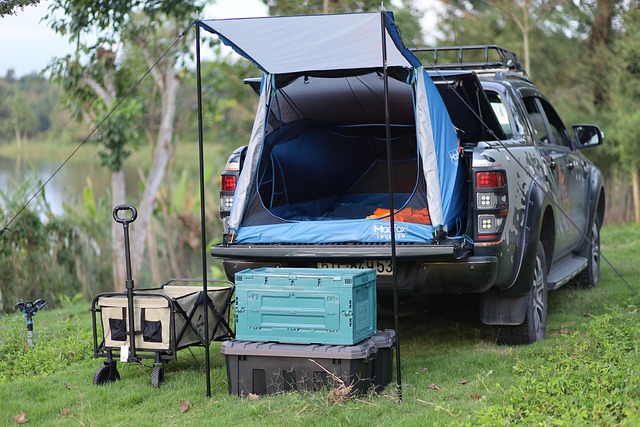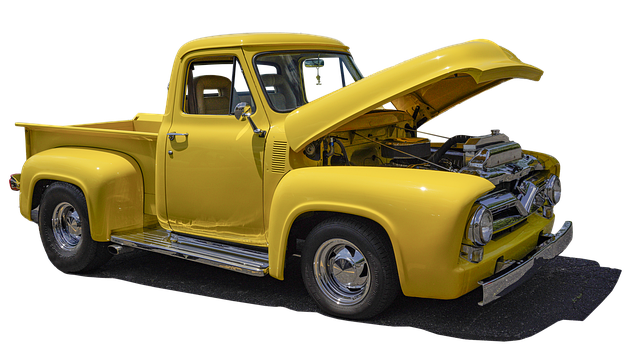Looking to register your car in California? This comprehensive guide walks you through every step, from understanding key requirements to securing your license plate. Discover the essential documents needed for a successful VIN verification, learn how to perform this critical check, and complete the application process seamlessly at the DMV. By following these clear instructions, you’ll be on your way to legal California car registration in no time.
- Understand California Car Registration Requirements
- Gather Necessary Documents for VIN Verification
- Perform Vehicle Identification Number (VIN) Check
- Complete Application and Submit to DMV
- Pay Registration Fees and Receive License Plate
Understand California Car Registration Requirements

Before registering your car in California, it’s crucial to understand the state’s specific requirements. One key aspect is ensuring accurate and up-to-date vehicle identification number (VIN) verification. The VIN is a unique code that identifies your vehicle, and its integrity is essential for registration. In California, you’ll need to provide this number as part of the registration process.
A mobile vin verifier or mobile vin inspection service can be particularly useful in this context, as it allows you to complete this step conveniently. These services offer on-site VIN verification, ensuring that your vehicle’s details match the information in the California Department of Motor Vehicles (DMV) database. This is a vital process to avoid any registration delays or issues.
Gather Necessary Documents for VIN Verification

Before heading to the California Department of Motor Vehicles (DMV), ensure you have all the required documents for a successful VIN (Vehicle Identification Number) verification process. This is a crucial step in registering your car as it confirms the vehicle’s authenticity and history. Gather essential papers such as the title or registration certificate from the previous state, your valid driver’s license, proof of insurance, and identification like a passport or state-issued ID. Additionally, for a seamless experience, consider having a mobile VIN verifier app on hand, which can expedite the process by allowing you to perform a quick digital VIN inspection.
The DMV may also require other specific documents depending on your vehicle’s age and circumstances, so it’s beneficial to check their website beforehand. Having these documents readily available will ensure a smoother registration process, avoiding potential delays or complications.
Perform Vehicle Identification Number (VIN) Check

Before registering your car in California, performing a Vehicle Identification Number (VIN) check is a crucial step. This process involves verifying the vehicle’s history and ensuring it hasn’t been reported as stolen or had any major damages. You can conduct this vin verification through various official channels, including mobile vin inspection services that offer convenient, on-site checks. These mobile vin verifiers provide an efficient way to confirm the vehicle’s authenticity and condition, which is essential for a smooth registration process.
By utilizing a mobile vin verifier, you can conveniently access critical information about your car’s past, such as ownership history, maintenance records, and any outstanding issues. This comprehensive view ensures that when you bring your vehicle to the California Department of Motor Vehicles (DMV), all necessary documentation is accurate and up-to-date. It’s a smart step towards avoiding potential delays or complications during registration.
Complete Application and Submit to DMV

After gathering all the necessary documents and ensuring your vehicle meets California’s requirements, it’s time to complete the registration process with the DMV. The first step involves filling out a Vehicle Registration Application (Form DV-157). This form requires detailed information about your car, including its make, model, year, and VIN number – which should be verified through a reliable vin inspection or mobile vin verifier to ensure accuracy. Accurately completing this section is crucial for smooth registration.
Once the application is filled out, submit it along with all required documents and fees to your local California DMV office. This might include proof of insurance, vehicle title (if applicable), and a valid driver’s license. A mobile vin verification service can be particularly useful in this step, as it provides an efficient and accurate way to confirm your car’s VIN, ensuring that the registration process is as hassle-free as possible.
Pay Registration Fees and Receive License Plate

After completing the registration process and passing the vehicle inspection, the next step is to pay the registration fees. These fees vary depending on the type of vehicle and its age. You can typically pay online or at a local DMV office. Once the fees are paid, you’ll be issued a registration certificate and license plates for your car.
In California, it’s crucial to have your Vehicle Identification Number (VIN) verified as part of the registration process. For added convenience, many residents opt for a mobile VIN inspection or verification service, allowing them to complete this step efficiently from the comfort of their homes. This modern approach streamlines the traditional process, ensuring that your car is registered smoothly and securely.
Registering a car in California involves understanding key requirements, gathering essential documents for VIN verification, completing an application with the DMV, passing a vehicle inspection, and paying registration fees. By following these steps diligently, you’ll not only comply with state regulations but also ensure a smooth, efficient process for your new vehicle’s official recognition. Remember, accurate VIN verification is paramount to navigate California’s car registration procedures successfully.



